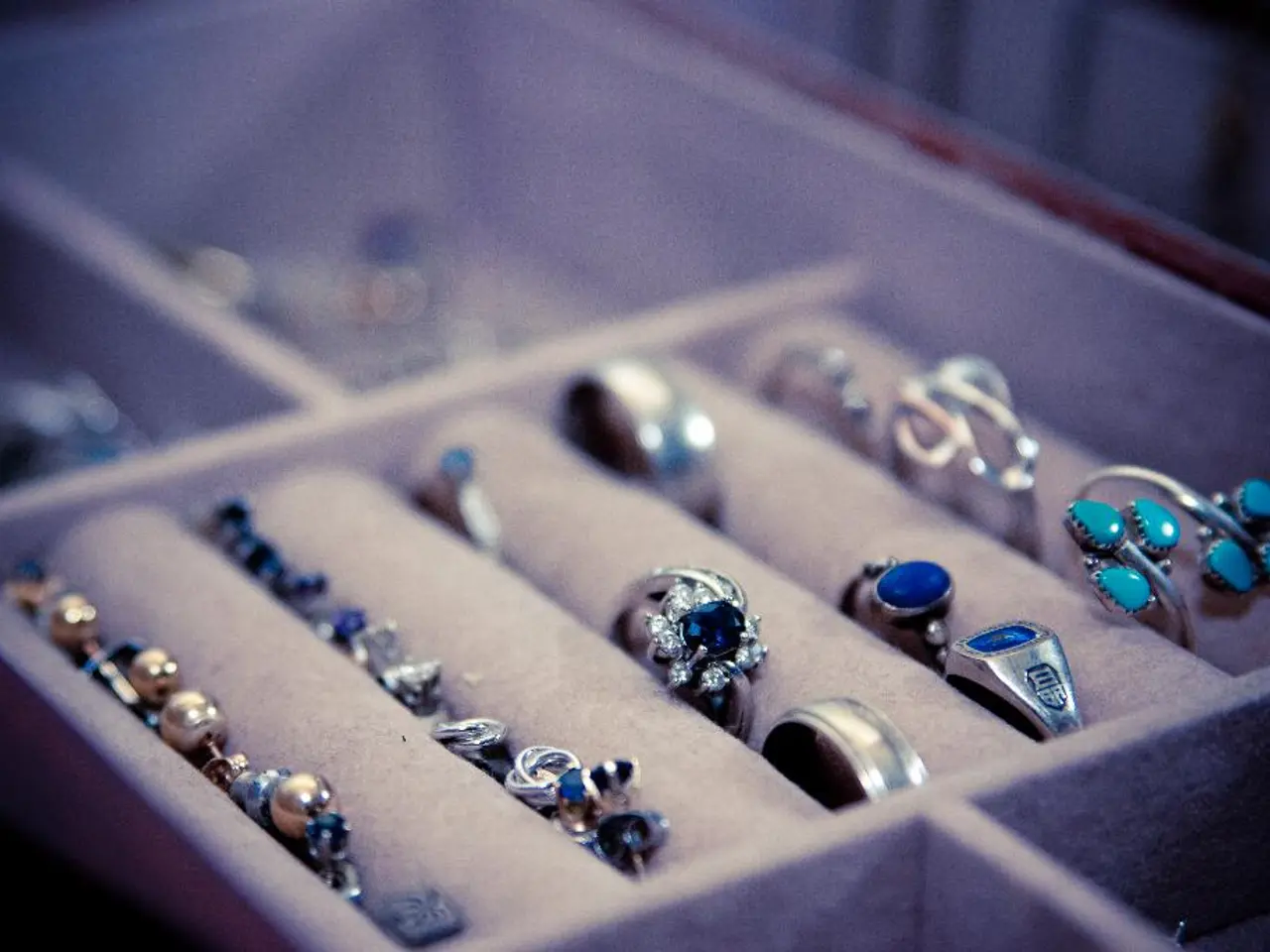Diamond Roses: Origins, Characteristics, and Maintenance
The Rose Cut diamond, a historical gemstone masterpiece, is the oldest diamond cut still in use today, dating back to the 16th century. Its unique design, featuring a flat base with no pavilion and a crown composed of triangular facets that rise to a single apex, resembling the shape of a rosebud, has captivated jewelry enthusiasts for centuries.
### History and Evolution
The Rose Cut originated during the transition of diamond cutting from basic polishing of raw stones to more artistic faceting. It emerged in the 15th and 16th centuries, particularly in the diamond cutting centers of Northern Europe, notably Antwerp and Paris, where Jewish cutters played a significant role [1].
The style's popularity was due in part to its practical advantages. The flat bottom allowed cutters to maximize yield from thin or irregular diamond roughs, turning smaller or less ideal stones into attractive gems [1]. Over time, the dome shape became higher to accommodate bulkier stones, and the Rose Cut stood alongside other contemporary styles like the Mughal cut in India [1].
The Rose Cut remained popular throughout several historical eras, including the Pre-Georgian, Georgian, Victorian, Edwardian, and Art Deco periods, before its popularity declined with the rise of the Old Mine and Old European cuts [2]. However, in recent years, the Rose Cut has experienced a resurgence in popularity, especially among vintage jewelry enthusiasts and those seeking ethically produced or lab-grown diamonds that replicate antique aesthetics [2][4][5].
### Significance
The Rose Cut represents an important link in the historical progression of diamond cutting, marking the transition from rough stones to faceted gems designed to catch light in a novel way. Its flat base and distinctive faceting make it especially suitable for antique and vintage jewelry styles, offering a softer, romantic sparkle compared to modern brilliant cuts [5].
Technologically, the Rose Cut's simplicity allowed early cutters to work with limited tools, while modern lab-grown diamonds with Rose Cuts benefit from advanced precision engineering and optical modeling to optimize their beauty while maintaining historical charm [5]. As a cultural symbol, the Rose Cut diamond embodies centuries of craftsmanship and evolving tastes, representing both the heritage of European and Indian diamond cutting traditions and the enduring allure of classic gemstone artistry [1][2][3].
### Identifying and Appreciating a Rose Cut
Understanding how to properly identify a Rose Cut helps ensure authenticity when purchasing these unique stones, whether examining an antique piece or considering a modern interpretation. A genuine Rose Cut diamond can be identified by its flat base with no pavilion, visible when viewed from the side. When examined with a loupe or magnifying glass, a true Rose Cut will show clear divisions between facets, each triangular facet meeting its neighboring facets in straight, clean lines [6].
Regular professional inspections are crucial for Rose Cut diamonds, especially those in antique settings, to ensure all prongs or bezels remain secure. Color grading becomes particularly important in Rose Cuts because their large, open facets and transparent nature make color more visible than in brilliant cuts [7].
### Modern Adaptations and Quality Assessment
Modern Rose Cuts may incorporate slight variations on the traditional design while maintaining the basic principles, such as different numbers of facets or subtle changes in the dome's height [8]. Quality assessment in Rose Cuts differs significantly from modern diamonds, with the cut grade focusing more on symmetry and facet arrangement rather than standardized proportions [8].
The defining characteristic of a Rose Cut is its construction, featuring a flat base with no pavilion and a domed crown covered in triangular facets. The faceting pattern, consisting of triangular facets arranged in a symmetrical pattern that rises to a point or apex, is its most distinctive feature [8]. The crown (top) structure of a Rose Cut features triangular facets that rise to meet at a point or points, creating a dome-like appearance [8].
The sparkle pattern of a Rose Cut creates a distinctive visual effect that differs notably from brilliant cuts, producing a more subtle, rolling flash of light [8]. The Rose Cut offers a larger face-up appearance compared to brilliant cuts of the same carat weight, making it an excellent choice for those preferring lower-profile jewelry [8].
In summary, the Rose Cut diamond holds a unique place in gem history as the oldest diamond cut, valued for its distinctive flat base and faceted crown, bridging early diamond cutting practices to modern appreciation of vintage styles and ethical craftsmanship [1][2][5]. Its adaptability to various jewelry styles, from classic solitaires to modern, asymmetrical designs, makes it a versatile choice for jewelry lovers seeking a touch of history and artistry.
In the realm of lifestyle and fashion-and-beauty, the Rose Cut diamond stands out as a historical gemstone masterpiece, cherished for its captivating design and roots dating back to the 16th century. As one delves deeper into home-and-garden or education-and-self-development, the Rose Cut also represents a significant milestone in the evolution of diamond cutting, offering insights into antique and vintage styles, as well as modern adaptations and quality assessment techniques.




